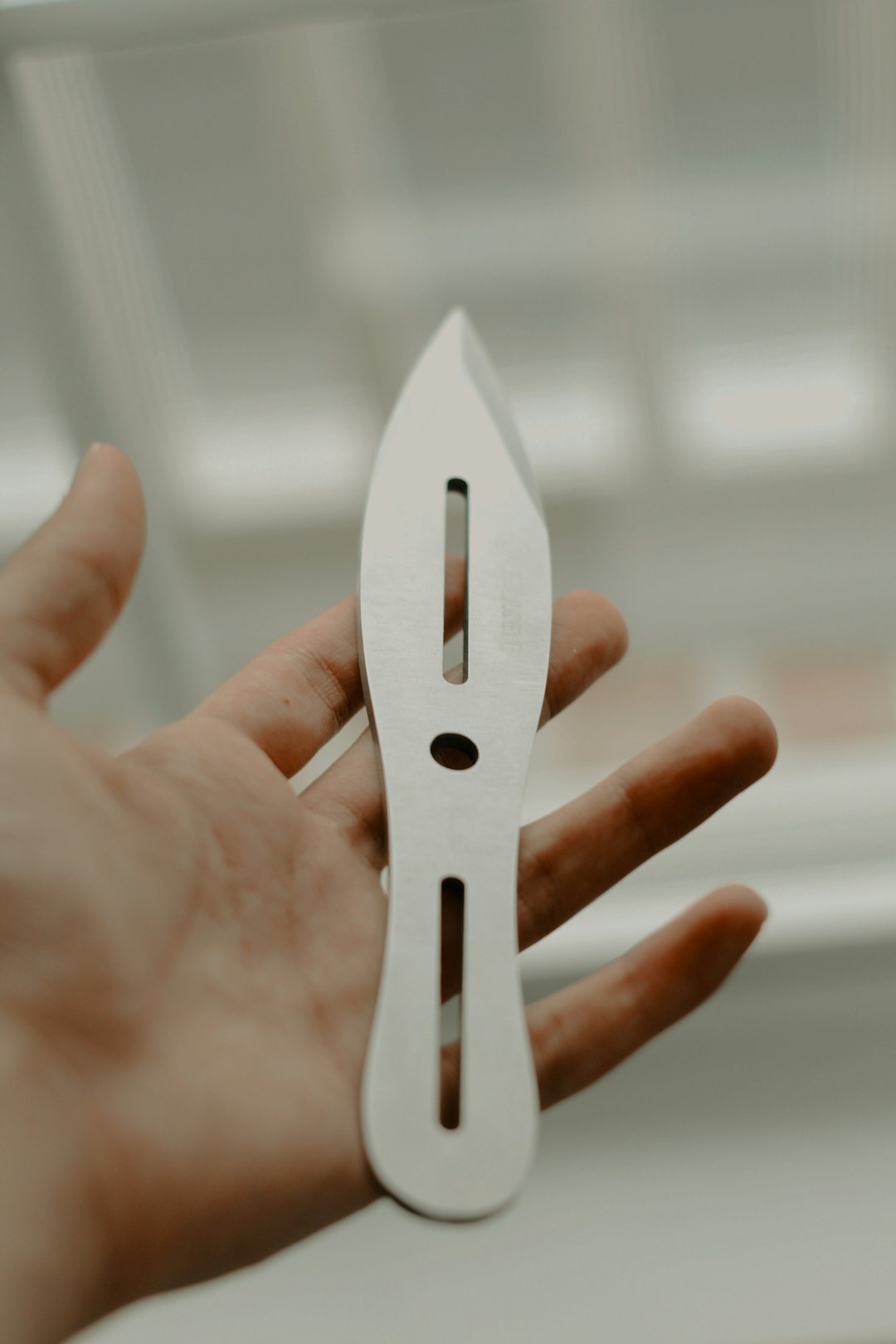Decode The Engineering Behind Professional Shears
Metallurgy, blade geometry, ergonomics, and maintenance—organized for stylists who rely on technical accuracy, not marketing hype.
- 38 Steel Alloys
- 7 Blade Geometries
- 11 Edge Profiles
- 6 Ergonomic Designs
Photo: Nathan DeFiesta via Unsplash
Why technical knowledge matters
Professional scissors are engineering projects. Steel chemistry, heat treatment, tension systems, and ergonomics determine how tools perform day after day.
This guide translates specifications into real-world meaning so you can validate brand claims, plan purchases, and maintain your tools with confidence.
- Compare alloys before investing hundreds in a new pair.
- Match blade and edge geometry to your cutting technique.
- Choose ergonomics that protect your hands for decades.
- Understand maintenance requirements before you buy.
Knowledge is power—especially when tools shape your career. This library breaks down the science and craftsmanship behind professional scissors so you can separate marketing from engineering.
Dive into metallurgy to decode steel numbers, study blade and edge geometry to understand cutting feel, explore ergonomics to prevent injury, and learn how tension systems keep shears performing at their best.
Use these resources to guide purchase decisions, troubleshoot performance issues, and coach your peers. Technical fluency protects your investment and your hands.
Steel Types
38 professional alloys decoded. Compare hardness, edge retention, and corrosion resistance.
Explore Steel TypesBlade Geometry
7 blade shapes dissected so you can match geometry to technique.
View Blade TypesEdge Profiles
11 edge configurations. Understand cutting feel, maintenance, and durability.
Compare Edge TypesErgonomic Handles
6 handle designs to protect wrists, thumbs, and shoulders.
Explore Handle TypesTension Systems
7 pivot mechanics explained so you can tune your shears with confidence.
Learn Tension SystemsFinishes & Coatings
10 finishing processes. Understand DLC, TiN, and polishing options.
Explore Finish TypesHair Types & Tool Match
12 curl patterns mapped to the shears that respect them.
Study Hair TypesTechnical Questions Professionals Ask
Steel designations indicate alloy composition and properties. 440C contains 0.95-1.20% carbon with chromium for hardness. VG-10 adds vanadium and cobalt for superior edge retention. ATS-314 includes molybdenum for toughness.
These aren't just names—they're recipes. Each element serves a purpose: carbon for hardness, chromium for corrosion resistance, vanadium for wear resistance. Understanding composition helps predict performance.
Rockwell hardness (HRC) indicates steel hardness. Professional scissors typically range: 56-58 HRC (German style, more forgiving), 58-61 HRC (balanced performance), 61-63 HRC (Japanese style, maximum sharpness).
Harder isn't always better. Above 63 HRC becomes brittle. Below 56 HRC won't hold an edge. The sweet spot depends on your maintenance habits and cutting style.
Multiple physics principles interact: Balance point affects wrist rotation effort. Weight distribution changes muscle engagement patterns. Blade intersection angle determines cutting resistance. Handle position impacts mechanical advantage.
These micro-differences compound over thousands of cuts. A 2mm balance shift might seem trivial but changes wrist fatigue by 20% over an 8-hour day.
Convex edges curve like clamshells, creating an extremely sharp cutting angle. They slice through hair with minimal resistance but require precise manufacturing and careful maintenance. Beveled edges meet at a defined angle, offering durability and easier sharpening.
Think of convex as a razor blade—incredibly sharp but delicate. Beveled resembles a knife—reliable and maintainable. Your technique determines which serves better.
Three primary factors: Steel composition (harder steel resists wear), edge geometry (acute angles dull faster), and usage patterns (slide cutting accelerates wear). Environmental factors like humidity and chemical exposure also contribute.
Microscopic metal fatigue occurs with each cut. Higher quality steel resists this deformation longer. Proper maintenance (cleaning, oiling, tension) significantly extends edge life.
Several mechanical failures cause pushing: dull edges (most common), incorrect tension allowing blade separation, nicked edges creating gaps, or misalignment from dropping. Each requires different solutions.
Diagnosis starts with the tissue test—sharp scissors cleanly slice tissue paper. If they catch or tear, professional sharpening is needed. Tension issues show as gaps when backlit.
Quality coatings provide measurable benefits: Titanium nitride reduces friction by 30%, improving cutting smoothness. DLC (Diamond-Like Carbon) offers extreme hardness and chemical resistance. Black oxide prevents corrosion without affecting sharpness.
Beware marketing hype—colored coatings alone don't improve performance. The coating must serve a functional purpose beyond aesthetics.
Ergonomic research shows: Straight handles force 40% more wrist deviation. Offset handles reduce ulnar deviation by 15-20 degrees. Crane handles enable neutral wrist position. Swivel thumbs eliminate repetitive thumb rotation.
Small improvements compound. Reducing wrist angle by 10 degrees can decrease injury risk by 50% over a career. Ergonomics isn't comfort—it's career preservation.
Optimal tension creates controlled friction between blades. Too loose allows lateral movement, causing hair to fold. Too tight accelerates wear and increases hand fatigue. The "drop test" (blade closing to 45° from 90°) indicates proper tension.
Temperature affects tension—metal expands approximately 0.01% per 10°F. Daily adjustment compensates for environmental changes and wear patterns.
Experienced professionals often can. One HRC point represents approximately 10% difference in wear resistance. Over weeks, this translates to noticeable edge retention differences. The cutting feel also changes—harder steel has less "give" at the edge.
Context matters more than absolute numbers. The jump from 58 to 62 HRC is dramatic. From 61 to 62? Subtle. Most notice 2-3 HRC differences immediately.
Essential Technical Knowledge
Metallurgy Fundamentals
Steel composition determines performance. Understanding alloys, heat treatment, and hardness helps predict durability and maintenance needs.
Geometry Principles
Blade angles, edge bevels, and point designs create different cutting actions. Small geometric changes produce dramatically different results.
Biomechanics
Proper ergonomics prevent injuries. Understanding hand mechanics, force distribution, and repetitive strain guides tool selection.


